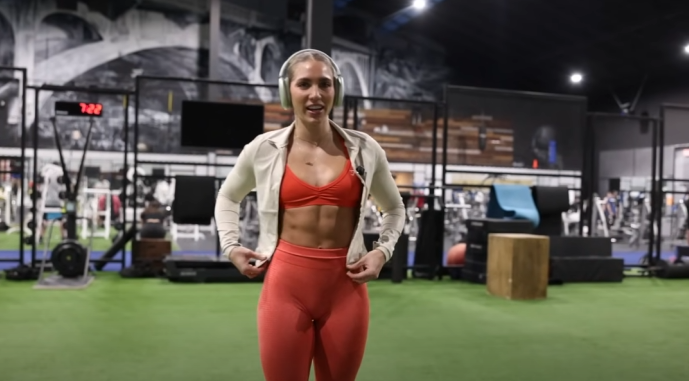
Building a strong, sculpted upper body is essential for both aesthetics and functionality. A well-developed chest and shoulder routine not only enhances your physique but also improves posture, stability, and overall strength. If you’re looking to tone your muscles, increase strength, and push your fitness to the next level, this Workout With Me: Chest & Shoulders session will help you achieve those goals. Grab your weights, get motivated, and let’s get started!
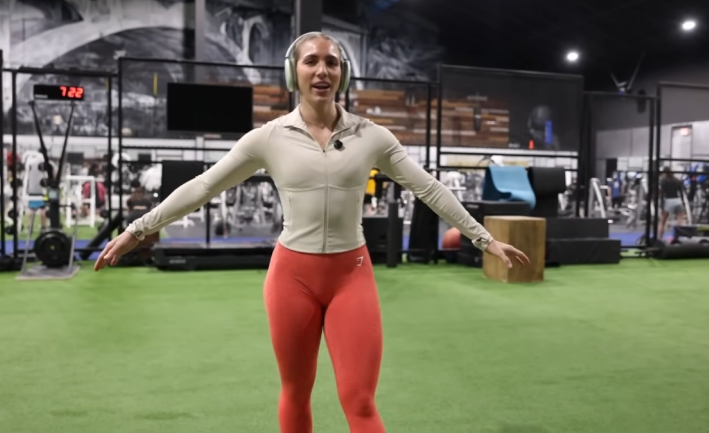
Why Train Chest & Shoulders Together?
Combining chest and shoulder exercises in one workout is effective because these muscle groups work together in many upper-body movements. Training them simultaneously offers several benefits:
- Balanced Strength Development: The chest and shoulders support each other in pressing movements, helping to develop overall strength.
- Improved Posture: Stronger chest and shoulder muscles improve posture by counteracting the effects of slouching.
- Efficient Workouts: By training these two muscle groups together, you maximize your time and results.
- Enhanced Athletic Performance: A strong upper body contributes to better performance in sports and daily activities.

The Workout Plan: Chest & Shoulders
This routine includes 6 key exercises, focusing on both strength and muscle definition. Perform 3-4 sets of each exercise, with 8-12 repetitions per set, and rest for 30-60 seconds between sets.
Warm-Up (5-7 Minutes)
Before we begin, warming up is crucial to prevent injuries and prepare the muscles. Here’s a quick warm-up routine:
- Arm Circles – 30 seconds forward, 30 seconds backward
- Shoulder Rolls – 30 seconds
- Jumping Jacks – 45 seconds
- Push-Up to Downward Dog – 10 reps
- Resistance Band Shoulder Warm-Up – 15 reps
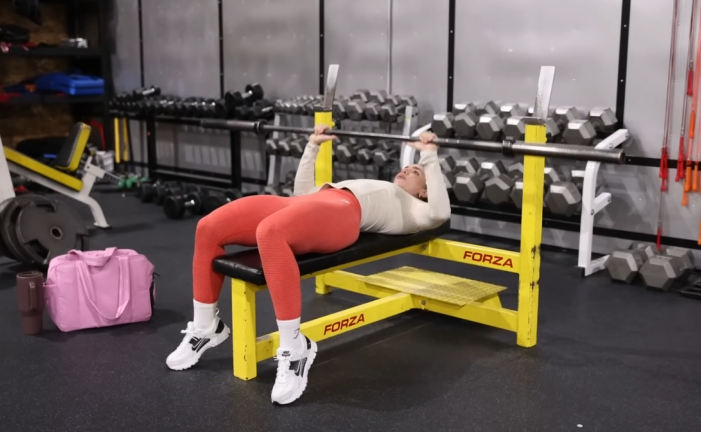
Chest & Shoulder Workout Routine
1. Barbell or Dumbbell Bench Press
Muscles Worked: Chest, Shoulders, Triceps
- Lie on a bench with feet flat on the floor.
- Hold a barbell or dumbbells at chest level with a firm grip.
- Press the weight upward until your arms are fully extended.
- Slowly lower the weight back to the starting position.
- Keep your core engaged throughout the movement.
Modification: Use dumbbells if a barbell is not available.
2. Shoulder Press (Dumbbells or Barbell)
Muscles Worked: Shoulders, Triceps
- Sit or stand with a dumbbell in each hand at shoulder height.
- Press the weights straight overhead until your arms are fully extended.
- Lower them slowly back to shoulder level.
- Maintain a controlled movement to prevent injury.
Modification: Perform this exercise seated if you need extra stability.
3. Incline Dumbbell Press
Muscles Worked: Upper Chest, Shoulders, Triceps
- Adjust the bench to a 30-45 degree incline.
- Hold dumbbells at shoulder level and press them up.
- Lower slowly until your elbows are at a 90-degree angle.
- Keep a controlled movement throughout.
Modification: If you don’t have an adjustable bench, use a flat bench press instead.
4. Arnold Press
Muscles Worked: Shoulders, Upper Chest, Triceps
- Start with dumbbells in front of you at chest height, palms facing you.
- Rotate your hands outward as you press the weights up.
- At the top, your palms should face forward.
- Lower the weights back down, reversing the motion.
Modification: Reduce weight if needed to maintain form.
5. Push-Ups (Wide & Narrow Stance)
Muscles Worked: Chest, Shoulders, Core
- For wide push-ups, place hands wider than shoulder-width to target the chest more.
- For narrow push-ups, keep hands close together to engage shoulders and triceps.
- Lower your body until your chest nearly touches the ground.
- Push back up to the starting position.
Modification: Perform push-ups on your knees or against a wall if needed.
6. Lateral Raises
Muscles Worked: Side Delts (Shoulders)
- Hold a dumbbell in each hand by your sides.
- Raise the weights out to the sides until they reach shoulder level.
- Lower them slowly back down.
- Avoid swinging; keep the movement controlled.
Modification: Use lighter weights or resistance bands if needed.

Cool Down & Stretching (5 Minutes)
Cooling down helps your muscles recover and reduces soreness. Try these stretches:
- Chest Opener Stretch – 30 seconds
- Cross-Body Shoulder Stretch – 30 seconds per arm
- Triceps Stretch – 30 seconds per arm
- Neck Rolls – 30 seconds
- Child’s Pose – 30 seconds
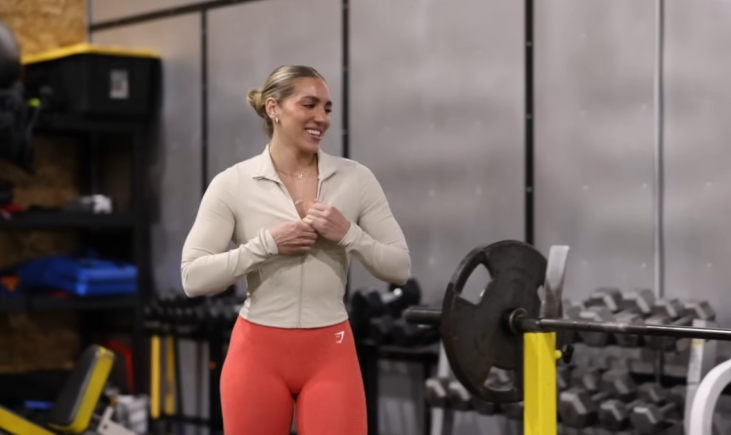
Workout Tips for Maximum Gains
- Use Proper Form: Incorrect form can lead to injuries and slow progress.
- Control Your Reps: Avoid using momentum; focus on controlled movements.
- Increase Weight Gradually: Progressively overload by increasing weight or reps.
- Engage Your Core: A strong core supports better lifting mechanics.
- Stay Consistent: Train chest and shoulders at least once or twice a week for best results.
- Hydrate & Fuel Properly: Eat enough protein and drink water to aid muscle recovery.

How Often Should You Train Chest & Shoulders?
For best results, include chest and shoulder workouts 1-2 times per week. Allow 48 hours of recovery before targeting the same muscle groups again. Pairing chest and shoulders with triceps or back on different days can create a balanced workout split.
Expected Results & Progress
Short-Term Effects (After a Few Sessions)
- Increased muscle activation
- Temporary muscle pump
- Improved endurance and posture
Long-Term Effects (4-8 Weeks of Consistency)
- Increased muscle definition in chest & shoulders
- Greater strength in pressing movements
- Improved upper-body endurance
- Better posture and stability
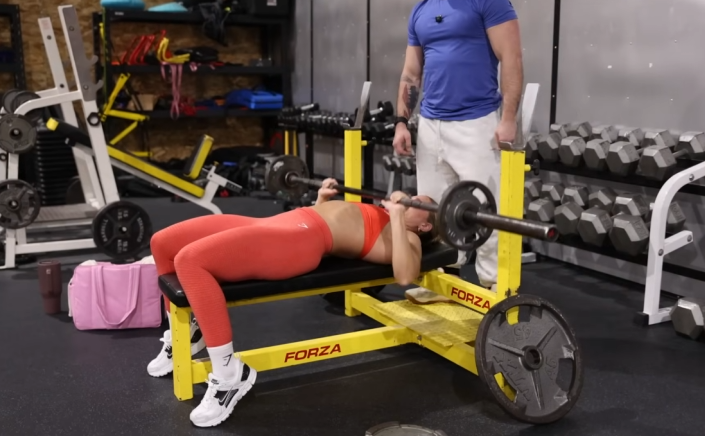
Final Thoughts
This Workout With Me: Chest & Shoulders routine is designed to help you build a stronger upper body, improve aesthetics, and boost overall fitness. By incorporating these exercises into your weekly routine, you’ll see visible muscle definition and increased strength over time.
Now, grab your dumbbells, get in position, and let’s crush this workout together!


